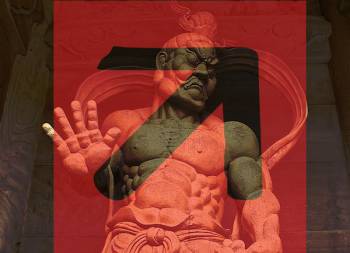 “I used to have a lot of Driver, but I don’t need it much anymore.” I’ve heard countless people comment as we reviewed their FEBI reports, especially those with low Driver scores, including many successful leaders and colleagues in leadership development. They’re not surprised by the low Driver score; they know it’s the pattern of pushing, competing – “the accelerator pedal of business” – we sometimes call it. And for people who recall earlier days of arrogant certainty and ambitious striving, it can feel like a pattern outgrown. Indeed, there’s a lot not to like in the Driver pattern. In our latest research comparing the FEBI against the NEO – more on that in other posts – Driver correlated as expected, showing up as the most disagreeable pattern. Among its significant correlations we find action-orientation – just do it! – but not trusting, not altruistic, not compliant, and prone to anger. No wonder so many people willingly relegate this pattern to their past.
“I used to have a lot of Driver, but I don’t need it much anymore.” I’ve heard countless people comment as we reviewed their FEBI reports, especially those with low Driver scores, including many successful leaders and colleagues in leadership development. They’re not surprised by the low Driver score; they know it’s the pattern of pushing, competing – “the accelerator pedal of business” – we sometimes call it. And for people who recall earlier days of arrogant certainty and ambitious striving, it can feel like a pattern outgrown. Indeed, there’s a lot not to like in the Driver pattern. In our latest research comparing the FEBI against the NEO – more on that in other posts – Driver correlated as expected, showing up as the most disagreeable pattern. Among its significant correlations we find action-orientation – just do it! – but not trusting, not altruistic, not compliant, and prone to anger. No wonder so many people willingly relegate this pattern to their past.
But the last group who came through our core program at the Institute for Zen Leadership showed me anew what Driver energy is good for, even among mature, servant leaders, and certainly among people who would train in Zen. In The Zen Leader program (as in the book), we move people through each of the 4 FEBI energy patterns and let them experience the corresponding emotions, mindset and behaviors. As we were debriefing the Driver pattern, we talked about its role at different stages in life, from defining our boundaries during our terrible two’s, to teenage rebellion, to the warrior, the disruptor, and ultimately the guardian. I likened this more mature role to something of a temple guardian that, at a metaphorical level, keeps out evil spirits. In dealing with dozens of things to do and endless distractions, the Driver serves as our own guardian - helping us focus on what is most essential. As we put our ideas or work out into the world, the Driver protects them/us from being stopped by barriers or dismissed as lightweight. Even in Zen meditation, we subtly engage the Driver pattern during every exhale, as something of our inner temple guardian to keep the mind clear.
This remarkable group took it further. The jiki – that is, the person who leads the meditation sessions – is also a Driver guardian, they noted, that pushes us to get serious, be here now, and put everything into our sitting. “There’s yet another role the temple guardian plays,” offered one of the participants, already a seasoned Zen practitioner. “Because it’s counter-productive, even dangerous to open stuff in ourselves until we’re ready to deal with it.” I’ve come to trust that the mind-body doesn’t open something up until it's ready to deal with it. But the truth of his point hit home as my mind flashed to people who took mind-expanding, acid trips in the 60’s and were rarely able to integrate the experience and, at worst, were jumping off buildings thinking they could fly. “The fierceness of the guardian is supposed to give us pause at the gates of the temple,” he continued, “and we only enter if we’re ready to face whatever the training will put us through or pull out of us.” The fierceness is meant to either raise our own fierce determination or make us stay the hell out. For fierceness will be called for. As a Zen Master of old put it, “If you’re going to do battle with yourself, better go in armed to the teeth.”
So thank you, oh disagreeable Driver, for helping us be warriors when we need to be, great protectors of our work, our teams, families, companies and countries when we need to be, and great destroyers of delusion! -GW
For more ways to engage the Driver in you, download this Driver Pattern Energizer from the bestselling book Move to Greatness.



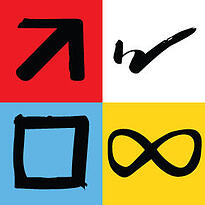


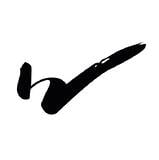
 ext time you’re faced with chaos, try this exercise to approach it with all the possibility of the Visionary. To get the most out of this activity, I strongly encourage first entering Visionary physically, such as is shown in the Visionary Pattern Energy you can download below. With blank paper and a pen, find a quiet open space. A park bench, a meadow or by a body of water is a great space for this activity. Become aware of your breathing, let your body relax, and let your eyes soften to take in full peripheral vision – seeing the entire scene around you all at once. Now, in the middle of the paper draw a circle and write the phrase “what is possible now?” Over the next 20 minutes, write down any thought that pops in your head. You don’t have to think too hard about it, nor do the thoughts need to make sense now. Just keep feeling the flow of your breath, feeling into the bigness of the Visionary, and let thoughts of all that is possible arise on their own. After writing down a thought, rather than focusing on it, just let it go and await the next thought. With this random smattering of possibilities in front of you, turn your page over and again draw a circle except this time write the phrase “what wants to happen here?” Again, take 20 minutes powered by the Visionary and, with this question, write down whatever thoughts decide to pop in your head. By the end of this activity, take a look at your paper and see what you came up with. Check in on the feeling this framing brings whatever issue you were facing. Empowered by the Visionary, it will be hard to find anything you can’t handle.
ext time you’re faced with chaos, try this exercise to approach it with all the possibility of the Visionary. To get the most out of this activity, I strongly encourage first entering Visionary physically, such as is shown in the Visionary Pattern Energy you can download below. With blank paper and a pen, find a quiet open space. A park bench, a meadow or by a body of water is a great space for this activity. Become aware of your breathing, let your body relax, and let your eyes soften to take in full peripheral vision – seeing the entire scene around you all at once. Now, in the middle of the paper draw a circle and write the phrase “what is possible now?” Over the next 20 minutes, write down any thought that pops in your head. You don’t have to think too hard about it, nor do the thoughts need to make sense now. Just keep feeling the flow of your breath, feeling into the bigness of the Visionary, and let thoughts of all that is possible arise on their own. After writing down a thought, rather than focusing on it, just let it go and await the next thought. With this random smattering of possibilities in front of you, turn your page over and again draw a circle except this time write the phrase “what wants to happen here?” Again, take 20 minutes powered by the Visionary and, with this question, write down whatever thoughts decide to pop in your head. By the end of this activity, take a look at your paper and see what you came up with. Check in on the feeling this framing brings whatever issue you were facing. Empowered by the Visionary, it will be hard to find anything you can’t handle.

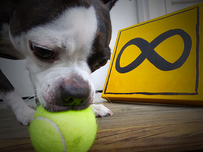 imaginations. You would be mistaken. I am actually describing a typical Saturday morning for my wife, Jennifer. No, Jennifer is not from a magical land, nor a figment of my own imagination. Come Saturday morning, Jennifer is a gamer. Her games of choice are always of the creative, whimsical and playful variety. I already know what some of you are thinking: What a waste of time. Isn’t Nintendo for children? I would postulate that not only should we play and have fun, but that time spent doing so is of tremendous benefit to us. The more childlike and whimsical the better!
imaginations. You would be mistaken. I am actually describing a typical Saturday morning for my wife, Jennifer. No, Jennifer is not from a magical land, nor a figment of my own imagination. Come Saturday morning, Jennifer is a gamer. Her games of choice are always of the creative, whimsical and playful variety. I already know what some of you are thinking: What a waste of time. Isn’t Nintendo for children? I would postulate that not only should we play and have fun, but that time spent doing so is of tremendous benefit to us. The more childlike and whimsical the better!  Play is not only great for recharging your batteries outside of work, you can also engage this pattern at work, which makes work a lot more fun. The Collaborator pattern loves to have fun, to engage others, play in the give and take of relationships, and see both sides of a situation. Imagine how powerful this pattern could be if you need to engage your employees while navigating an organizational change, or to problem solve a complex issue. The Collaborator is often left out of the very situations where it is most needed. In such situations, especially if you normally approach them with the Driver’s urgency or the Organizer’s seriousness, you may need to be more intentional about summoning the Collaborator. But with a bit of practice, it will be easier and easier to do so.
Play is not only great for recharging your batteries outside of work, you can also engage this pattern at work, which makes work a lot more fun. The Collaborator pattern loves to have fun, to engage others, play in the give and take of relationships, and see both sides of a situation. Imagine how powerful this pattern could be if you need to engage your employees while navigating an organizational change, or to problem solve a complex issue. The Collaborator is often left out of the very situations where it is most needed. In such situations, especially if you normally approach them with the Driver’s urgency or the Organizer’s seriousness, you may need to be more intentional about summoning the Collaborator. But with a bit of practice, it will be easier and easier to do so.

 Here is how to get started. Take one of your brilliant ideas and write it down on a blank sheet of paper. Now, envision what it will be like for this idea to turn into reality. How is the world different? How is your idea/product being used? Really put yourself in that future of your idea. Now, summon your inner Organizer. Sit up straight, clean your workspace and put on some classical music. On your paper, write down several key things that would have to happen to make your idea a reality. Next, pick one of these things that you feel you can make headway on now, and write out a step-by-step list: how can you bring that about? Now, transfer this list to a calendar and hold yourself accountable to following through on these steps. It’s important to make these deadlines real for yourself, so if you are having a hard time following through, try telling a friend - sort of like an accountability buddyJ The Chinese philosopher Lao-tzu famously said, “A journey of a thousand miles begins with a single step.” With a little help from the Organizer, take that step today!
Here is how to get started. Take one of your brilliant ideas and write it down on a blank sheet of paper. Now, envision what it will be like for this idea to turn into reality. How is the world different? How is your idea/product being used? Really put yourself in that future of your idea. Now, summon your inner Organizer. Sit up straight, clean your workspace and put on some classical music. On your paper, write down several key things that would have to happen to make your idea a reality. Next, pick one of these things that you feel you can make headway on now, and write out a step-by-step list: how can you bring that about? Now, transfer this list to a calendar and hold yourself accountable to following through on these steps. It’s important to make these deadlines real for yourself, so if you are having a hard time following through, try telling a friend - sort of like an accountability buddyJ The Chinese philosopher Lao-tzu famously said, “A journey of a thousand miles begins with a single step.” With a little help from the Organizer, take that step today!


 Tell me about Stonewater Leadership.
Tell me about Stonewater Leadership.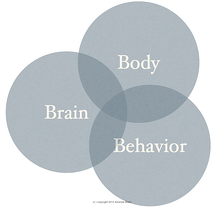 logical systems run right through your pelvic bowl. Your everyday posture actually plays a role in your resilience to stress.
logical systems run right through your pelvic bowl. Your everyday posture actually plays a role in your resilience to stress.

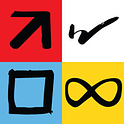


 ty in other workplaces and are willing to make that kind of investment, we can achieve the efficiency, elegance, creativity and sustainability in performance.
ty in other workplaces and are willing to make that kind of investment, we can achieve the efficiency, elegance, creativity and sustainability in performance.